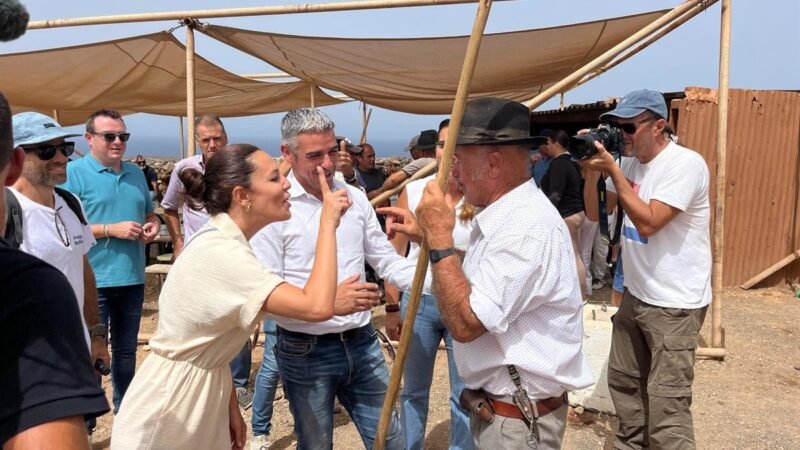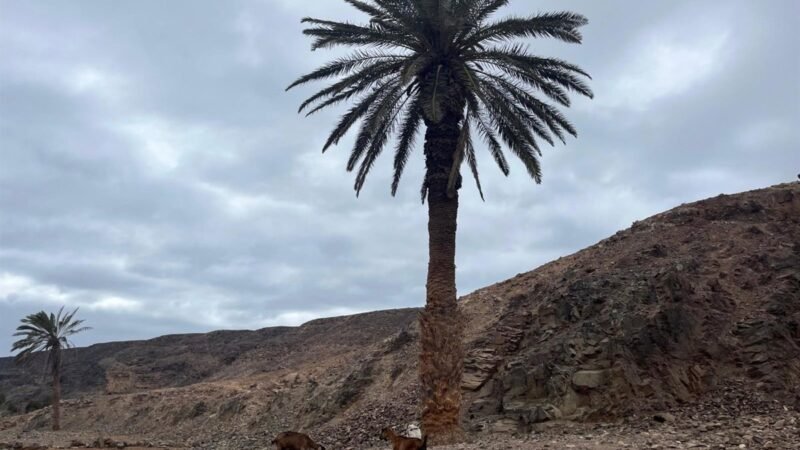El Cabildo y Gobierno informan sobre tramo Cuchillete-Matas Blancas en Fuerteventura

Lola García: “The alternative that was causing social concern, which passed through the Valley of La Lajita, has now been ruled out, and we continue to study those that have the least possible impact on people and the environment”
Tuesday, February 18, 2025.-
The Cabildo de Fuerteventura and the Government of the Canary Islands have reported on the Cuchillete-Matas Blancas section of the North-South axis, in an open meeting convened for interested parties to learn firsthand about the procedure that has been developed, as well as the evaluation of each of the alternative routes.
Present at the meeting were the island president, Lola García, the Minister of Public Works, Housing and Mobility of the Government of the Canary Islands, Pablo Rodríguez, as well as the island councilor for Infrastructures, Blas Acosta, the mayor of Tuineje, Candelaria Umpiérrez, and the mayor of Pájara, Alejandro Jorge.
Lola García opened the meeting by informing, first of all, that the alternative route that was causing the most social concern, passing through the Valley of La Lajita, had been ruled out with the suspension of the geotechnical campaign announced by the Government of the Canary Islands, at the request of the Cabildo de Fuerteventura. “Therefore, we want to reassure the residents, as that route is completely ruled out, and we will continue to study and rule out the rest of the alternatives until we have one that affects people and the environment as little as possible. We will work hand in hand with the residents to ask the Government of the Canary Islands to have the best route from Cuchillete to Matas Blancas”.
The president of the Cabildo explained that “since we joined the island Corporation, we have been pointing out to the Government of the Canary Islands the need for the project to have the least impact.” “We made this known in various meetings with Minister Pablo Rodríguez, Minister Blas Acosta, and municipal representatives. In addition, we agreed to start a series of informative meetings to explain, firsthand, the roadmap to follow from now on”
According to García, “this is a fundamental infrastructure for Fuerteventura, which has been delayed for decades and is intended to benefit the mobility of those of us who are here, not to harm it.” “However, we understand the concern, because in a project of this nature, all alternatives must be studied from a technical point of view, and of course, we will not do anything without the support of the residents”.
The Minister of Public Works, Housing and Mobility, Pablo Rodríguez, emphasized “the great communication that has been maintained, at all times, by the majorero institutions to carry out an essential project for the connectivity of the island, minimizing as much as possible its potential impact on people”.
To carry out a project of this magnitude, Rodríguez explained, “we have the obligation to study all alternatives and rule them out for various reasons, whether environmental, social, or economic. Therefore, some of the routes have already been ruled out and alternative routes that have been enriched by the residents are being evaluated to have the least possible impact”.
The Minister of Infrastructures, Blas Acosta, highlighted that “the alternative will be chosen with the greatest technical consensus, with the priority of having this project completed so that it enters the next road agreement and so that the entire population can participate in this matter to minimize any negative effects”.
Next, the head of the technical area of the Ministry of Public Works, Mobility, and Housing of the Government of the Canary Islands, Ángel Mejías, detailed the current status of the project and the alternatives that have been studied and ruled out. The meeting also included the councilors from the Pájara area, Alexis Alonso, and from Tuineje, Evelyn Ávila.



